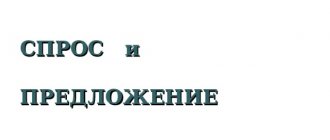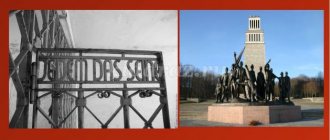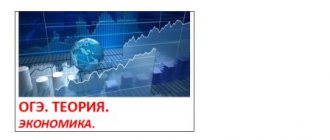business, product, capital, profit, taxation, entrepreneurship
The mystery of the old coin New!
1. Museum of Money 2. How much grapes cost 3. How not to trade 4. How to sell toys 5. How to help your sister Good and glory to Russian merchants New! Stroganovs, Morozovs, Tretyakovs, Shchukins, Mamontovs, Abrikosovs, Ledentsovs, Eliseevs, Filippovs... 1. “What are you guests bargaining with?” <…> 5. Such different good About visible and invisible money and the “vegetable gardens” where they grow 1. How they changed in the old days 2. How salt and stones pretended to be money<...> 11. “Vegetable garden” for money 12. The ABC of money
A sail for the state, or About taxes in the past and present 1. Someone is asking for your money 2. Shall we abolish taxes? <…> 7. Tales of Peter the Great 8. Cheese from unpaid taxes 9. Air taxes<…>
Economics for schoolchildren Charts, tables, graphs L. N. Ovchinnikova Kemerovo 2012. - presentation
Economics for schoolchildren Charts, tables, graphs L. N. Ovchinnikova Kemerovo 2012
L. N. Ovchinnikova Kemerovo 2012 Economics for schoolchildren Charts, tables, graphs
Ovchinnikova L. N. Economics for schoolchildren. Schemes, tables, graphs – 73 p. The manual includes diagrams, tables and graphs representing economic provisions in a simplified and generalized form on individual topics of the Economics course. The main purpose of the manual is to provide assistance in teaching and learning economics, as it can be used as handouts for training and self-control. The manual was developed in accordance with the “Mandatory minimum content of educational programs” in economics, approved by the Ministry of Education in 2004. The manual is intended for students and teachers of secondary schools
7 Concept of economics
8 Structure of the economy ECONOMY Culture Education Health Social security Science Management Housing and communal services Consumer services Sectors of material production Industry Agriculture and forestry Transport and communications Trade and catering Construction Logistics and technical support Sectors of the social and cultural sphere
9 System of factors of production
10 Needs
11 Hierarchy of human needs according to Epicurus (BC) Needs Needs are natural and necessary (food, water, safety...) Needs are natural, but not necessary (communication...) Needs are not natural and not necessary (luxury, wealth ...)
12 Hierarchy of human needs according to Wagner ( ) Needs Needs, the satisfaction of which requires the instinct of self-preservation Other needs
13 Hierarchy of human needs according to A. Maslow ( ) Need for self-realization Need for respect Social needs Safety needs Physiological needs
14 Algorithm of market needs Human needs Producing a product for others in the form of a product Exchange of goods, receiving goods for oneself Consumption of received goods and services
The problem of choice in the economy Labor Capital Land ResourcesNeeds Material Spiritual Social LimitedInfinite Problem of choice Purpose of choice Alternatives Criteria Price of choice (opportunity cost)
16 The main problem of economics Human needs Human needs + Labor, land, capital, goods, money 8 limit The main problem of economic theory and practice is to resolve the contradiction between people’s desire to satisfy their unlimited needs and the limited (rarity) of the resources at their disposal and used for this purpose.
17 Three main questions of economics WHAT? HOW? FOR WHOM? Which of the possible goods and services should be produced in a given economic space and at a given time? With what combination of production resources, using what technology, should the goods and services selected from the possible options be produced? Who will buy the selected goods and pay for them, benefiting from them? How should the gross income of society from the production of these goods and services be distributed?
18 Production possibility curve ABCDLMA, B, C, D – the maximum possible volume of production of means and objects, resources are used in full. L is the possible production volume, but not all resources are used in full or are used inefficiently. M – unattainable production volume due to lack of resources.
19 Property Economic category Legal category Property in the economic sense Appropriation Possession Use Disposal Realization
20 Subjects and objects of property Property Subjects of property (Active side of property relations) Person Family Social group Production team People Objects of property (Passive side of property relations) Land Natural resources Means of production Property Money and securities Information Labor force Property
21 Commodity production Commodity production is a type of economic organization in which products are created for their sale on the market. Serves various socio-economic systems Characteristic features of commodity production Open system of organizational and economic relations Depends on the degree of specialization of the enterprise; associated with the process of productive forces. There are indirect, economic connections between production and consumption. Economic relations are established through the market. Reasons for the emergence of a commodity economy. Social division of labor. Economic isolation of producers specializing in the manufacture of a product.
22 Types of economic systems Models of economic systems Traditional Market Centralized Mixed Transitional
23 Change in demand and quantity demanded D1D1 D D2D2 QP QDQD Q D2 Q D1 QP Q2Q2 Q1Q1 P1P1 P2P2 AB Change in demand (curve shift) Change in quantity demanded (movement along the curve)
24 Change in supply and quantity supplied QP QSQS Q S2 Q S1 QP Q2Q2 Q1Q1 P1P1 P2P2 PSPS S1S1 S S2S2 S Change in supply (curve shift) Change in quantity supplied (movement along the curve)
25 Market equilibrium PQEDS PEPE QEQE
26 Change in market equilibrium PQ E1E1 D S1S1 P1P1 Q1Q1 S2S2 P2P2 E2E2 Q2Q2
27 Formation of surplus and shortage of goods PQEDS P1P1 P2P2 PEPE Q D1 Q S2 QEQE Q D2 Q S1 Excess Deficit
Interaction of supply and demand EventGraphs P and Q 123 1) DS = PQ 2) DS = PQP P2P2 P1P1 Q1Q1 Q2Q2 D1D1 D2D2 SP P2P2 P1P1 Q1Q1 Q2Q2 D1D1 D2D2 SQQ
123 3) D = SPQ 4) D = SPQP P1P1 P2P2 Q1Q1 Q2Q2 D S2S2 Q S1S1 P P1P1 P2P2 Q1Q1 Q2Q2 D S2S2 Q S1S1
123 5) DS a) PQ b) PQ c) P = QP P1P1 P2P2 Q1Q1 Q2Q2 S2S2 Q S1S1 D1D1 D2D2 P P2P2 P1P1 Q1Q1 Q2Q2 S2S2 Q S1S1 D1D1 D2D2 PP Q1Q1 Q2Q2 S2S2 Q S1S1 D1D1 D2D2 a) b) c)
123 6) DS a) PQ b) PQ c) P = QP P2P2 P1P1 Q2Q2 Q1Q1 S1S1 Q S2S2 D2D2 D1D1 P P1P1 P2P2 Q2Q2 Q1Q1 S1S1 Q S2S2 D2D2 D1D1 PP Q2Q2 Q1Q1 S1S1 Q S2S2 D2D2 D1D1 a) b) c)
123 7) DS a) PQ b) PQ c) PQ = P P1P1 P2P2 Q1Q1 Q2Q2 S1S1 Q S2S2 D1D1 D2D2 P P1P1 P2P2 Q2Q2 Q1Q1 S1S1 Q S2S2 D1D1 D2D2 P P2P2 Q S1S1 Q S2S2 D2D2 D1D1 a) b) c) P1P1
123  DS a) PQ b) PQ c) PQ = P P2P2 P1P1 Q2Q2 Q1Q1 S2S2 Q S1S1 D2D2 D1D1 P P2P2 P1P1 Q1Q1 Q2Q2 S2S2 Q S1S1 D2D2 D1D1 P P1P1 Q S2S2 Q S1S1 D1D1 D2D2 a) b) c) P2P2
DS a) PQ b) PQ c) PQ = P P2P2 P1P1 Q2Q2 Q1Q1 S2S2 Q S1S1 D2D2 D1D1 P P2P2 P1P1 Q1Q1 Q2Q2 S2S2 Q S1S1 D2D2 D1D1 P P1P1 Q S2S2 Q S1S1 D1D1 D2D2 a) b) c) P2P2
34 Market economy Advantages promotes more efficient use of resources creates the need to respond flexibly and quickly adapt to changing production conditions creates conditions for the optimal use of scientific and technical progress when creating new goods, introducing new technologies, methods of organizing and managing production provides freedom of choice, actions of consumers and producers targets producers to meet needs and improve the quality of goods and services Disadvantages does not contribute to the conservation of non-renewable resources has a negative impact on environmental protection does not ensure the development of the production of goods and services for collective use (dams, public transport) does not create conditions for the development of fundamental science, the education system, etc. does not guarantee the rights to work, rest, income does not contain mechanisms that prevent the emergence of social injustice does not guarantee full employment and stable price levels
35 Subjects of a market economy State Household Enterprise Bank
36 Economic circulation Market for goods State Firms Households Consumer spending Goods and services Income Expenses Goods and services Total. benefits Taxes General benefits Taxes Market of resources Cash income Land, labor, capital Costs Resources Goods and services ExpensesResources
37 Functions of the market Function of self-regulation of commodity production. When demand increases, production volumes expand; when demand decreases, they decrease. regulation occurs through the purchase and sale of goods and services. Stimulating function. Encourages manufacturers to create needed products at the lowest cost and achieve higher profits by reducing costs and introducing innovations. Function of accounting for production costs. The market compares individual labor costs with the social average. When comparing, the quality of the goods is also taken into account. Regulatory function. The market establishes the basic proportions in the economy at the micro- and macro-level through the expansion or contraction of supply and demand. Function of democratization of economic life. With the help of market levers, efficient production is developed and inefficient production is destroyed. Due to this, differentiation of manufacturers occurs.
38 Classification of markets markets By economic purpose: -goods and services; -valuable papers; -means of production; - labor; -raw materials; - scientific and technical developments; -money; -other. According to the degree of restriction of competition: -perfect competition; -absolute monopoly; -monopolistic competition; -oligopoly. By geographical location: -local; -national; -worldwide. By industry: - automobiles; - grains; -oil; -etc. By types of participants in market relations: -wholesale trade; -retail; - government procurement. Taking into account compliance with the law: -legal; -shadow (illegal).
39 Market infrastructure Information centers, insurance, engineering, auditing, consulting and other firms Commodity exchanges, trade and service enterprises Banks, stock exchanges Labor exchanges, commodity exchanges Market of goods and services Financial and money markets Market of production factors
40 Market competition
41 Forms of market competition Forms of competition Perfect competition in the market there are many independent producers; the volume of production of an individual firm is insignificant and does not affect the price of products sold on the market; the buyer is well informed about prices. If someone raises the price of their products, they will lose buyers sellers do not collude on prices firms can freely enter and exit the market Imperfect competition Imperfect competition is a market in which none of the conditions of free competition are met. As a result: firms cannot influence the conditions for the sale of goods and compete; entry into the product market is limited
42 Characteristic features of the main market models Perfect competition Monopolistic competition Oligopoly Pure monopoly Number of firms Very large Large Several One Product type Standardized Differentiated Standardized. or differential. Unique Price control Available within narrow limits Absent Limited Significant Conditions for entry into the industry Very easy Relatively easy Blocked Non-price competition Examples Absent Agriculture Difficult Advertising. Trademarks Very developed Advertising Manufacture of footwear, clothing Mechanical engineering Public utility enterprises Characteristic features
43 The main organizational forms of monopoly Cartels Syndicates Trusts Concerns Monopolistic associations for the purpose of organizing joint sales of products Numerous agreements on product quotas and sales markets Monopolistic associations based on joint ownership and common management of production and sales A diversified system of enterprises with a single financial center and a variety of products
44 Tax system Types of taxes Subject of tax Object of tax Taxation unit Taxation rate Tax benefits Tax structure
45 Types of tax rates Tax rates Fixed rates - set in an absolute amount per unit of taxation Proportional rates - act in the same percentage of the tax object without taking into account changes in its value Progressive rates - increase as the value of the tax object increases Regressive rates - decrease as the value increases object of taxation
46 Types of taxes Taxes DirectIndirect According to the form of assignment of tax liability Depending on the territorial level Federal LocalTaxes of constituent entities of the Russian Federation Taxes on individuals Taxes on legal entities Taxes common to individuals and legal entities
Tax system of the Russian Federation Taxes Federal taxes Regional taxes Local taxes 1. Value added tax 2. Excise taxes on certain types of goods 3. Tax on profit (income) of organizations 4. Tax on capital income 5. Personal income tax 6. Contributions to state social extra-budgetary funds (social tax) 7. Subsoil use tax 8. Forest tax 9. Water tax 10. Environmental tax 1. Organizational property tax 2. Real estate tax 3. Road tax 4. Transport tax 5. Sales tax 6. Gambling business tax 1. Land tax 2. Personal property tax 3. Advertising tax 4. Inheritance and gift tax
48 Economic costs
49 Accounting costs Direct Costs of raw materials, supplies, semi-finished products Costs of fuel and energy resources Workers' salaries Indirect Overhead costs Depreciation Salaries of management personnel Interest on borrowed funds
50 Structure of revenue Revenue Economic costs Economic profit Explicit costs (accounting) Implicit costs Fixed costs Variable costs Accounting profit
51 Types of modern money Money Cash Paper Coin Non-cash Bank deposit, check, plastic card
52 Change in the discount rate The discount rate rises Loans become more expensive Firms take out less loans The money supply in circulation decreases The discount rate falls Loans become cheaper Firms take out more loans The money supply in circulation increases
53 Change in the mandatory reserve ratio The reserve ratio increases The amount of money lent decreases Firms take out fewer loans The money supply in circulation decreases The reserve rate decreases The amount of money loaned increases Firms take out more loans The money supply in circulation increases
54 Regulation of the volume of money supply Decrease Reduce Buy Weaken Increase Increase Sell Strengthen Required reserves Discount rate (refinancing rate) Open market operations Selective credit control To increase the money supply it is necessary To reduce the money supply it is necessary
55 Types of monetary policy Monetary policy Purchase and sale Required reserves Discount rate Bank reserves Demand deposits Money supply Expansionary Securities are purchased falling falls growing growing rising Restrictive Securities are being sold rising growing falling falling
56 Types of inflation Inflation Open (explicit) Hidden (suppressed) Natural (less than 10%) Creeping (from 10 to 20%) Galloping (over 20%) Hyperinflation (over 200%) Demand inflation Supply inflation By nature By level (% per annum) By factors
57 Anti-inflationary policy Active policy Aimed at eliminating the causes that caused inflation Adaptive policy Adaptation to inflation, mitigating its negative consequences Monetary levers Non-monetary levers
58 Types of wages Wages Nominal - actual wages expressed in monetary form Real - the number of goods and services that can be purchased with a nominal wage Minimum - the minimum level of wages officially established by the state in enterprises of any form of ownership
59 Forms of wages Salary Piecework Time-based Labor is paid depending on the quantity of products produced Labor is paid depending on the time spent
60 Causes of unemployment p/n Type of unemployment Cause of occurrence 1 Frictional Moving from one place of work to another or primary job search 2 Seasonal For some professions, there is a problem of employment at certain times of the year 3 Structural Closing of obsolete enterprises or structural transformations are accompanied by a reduction in the number of places 4 Cyclical The market experiences recessions and booms . The period from recession to recovery is a cycle. A decline in production always leads to the closure of many enterprises, reductions and dismissals of workers
61 Types of unemployment Unemployment FrictionalStructuralCyclical + FrictionalStructural Natural rate of unemployment
62 Elements of the labor market regulation system Labor exchanges Private intermediary firms Specialized government agencies performing intermediary functions in the labor market Specialized firms performing intermediary functions in the labor market
63 Main areas of activity of exchanges and intermediary firms Main areas of activity Registration of the unemployed Registration of vacancies Employment of the unemployed Study of market conditions and provision of information about it Professional retraining of the unemployed Payment of benefits Job analysis Assistance in hiring Career planning Training and retraining of labor resources Testing of persons wishing to get a job Regulation labor relations
64 GDP structure National income Indirect taxes Depreciation deductions GDP NNP
65 Methods for calculating GNP Measuring GNP by the amount of expenses Flow of goods method Measuring GNP by the amount of income Flow of costs method Personal consumption expenditures + Amount of capital consumed + Gross private domestic investment + Indirect business taxes + Government purchases of goods and services + Wages + Net exports - Rent+ GROSS NATIONAL PRODUCT=Interest+ Depreciation charges-Income from individual investments+ NET NATIONAL PRODUCT=Income taxes+ Indirect taxes on business dividends+ NATIONAL INCOME=Retained earnings+ Social security contributions-GROSS NATIONAL PRODUCT= Income taxes - Retained earnings - Transfer payments + PERSONAL INCOME = Personal taxes - DISPOSABLE INCOME =
National income: consumption and accumulation National income Accumulation Savings and investments Consumption Expenditures on meeting social needs Expenditures on personal consumption National income is the part of the cost of the total social product remaining after reimbursement of consumer means of production, a general indicator of the country's economic development. Wages of employees Profit of entrepreneurs Income of owners of loan capital Income of land owners
67 Economic growth Rate of economic growth Intensive Extensive Increase in production potential by increasing the quality of the factors of production used, improving equipment, technology and organization of production Increase in production potential by increasing the number of factors of production used
68 Factors of economic growth
69 Entrepreneurship system Entrepreneurship Economic category Management method Type of economic thinking Business entities Entrepreneurship objects
70 Types of entrepreneurship Entrepreneurship IndustrialCommercialFinancialIntermediaryInsurance
71 Types of enterprises Enterprises Commercial Non-profit Business partnerships Business societies Production cooperatives State and municipal enterprises Public and religious organizations Foundations Institutions Associations and unions Non-profit partnerships Autonomous non-profit organizations
72 Types of business partnerships and companies Full HT HT on faith (limited) Limited Liability Partnership CP with additional liability Joint Stock Companies (JSC) Open JSC Closed JSC Business Companies (CO) Business Partnerships (HT)
73 References Avtonomov V.S. Introduction to economics. — M.: Vita-Press, Ivanov S.I. Fundamentals of economic theory. - M.: Vita-Press, Linkov A. Ya. Economics. Workshop. - M.: Vita-Press, Linkov A. Ya. Economics. Textbook. - M.: Vita-Press, Lipsits I.V. Economics. Parts 1 and 2. — M.: Vita-Press, Lyubimov L.L., Prednezova N.A. Fundamentals of economic knowledge. — M.: Vita-Press, Ravichev S.A., Mikheeva S.A. Modern economics. Manual for high school. - M.: Vita-Press, 2003.






